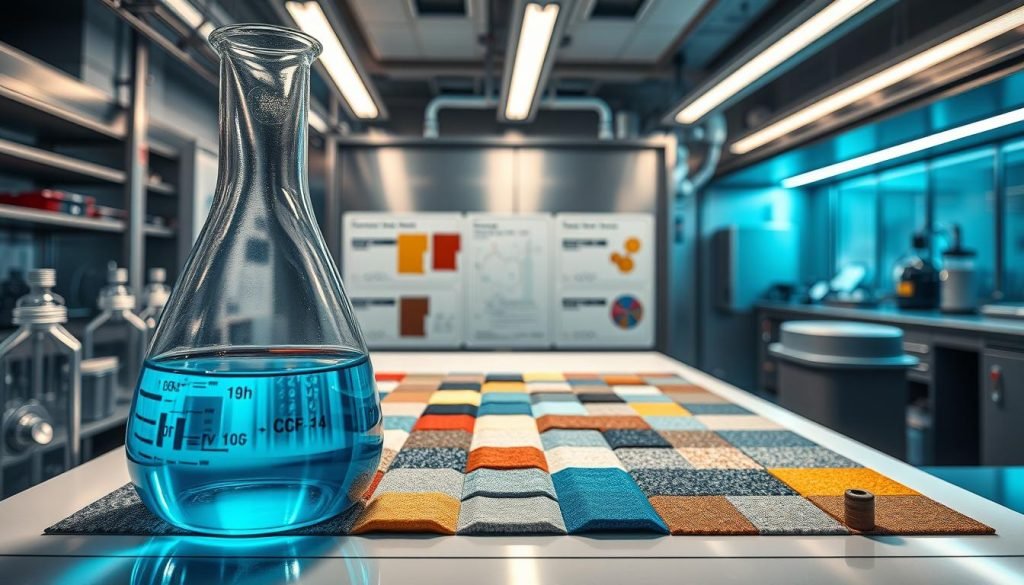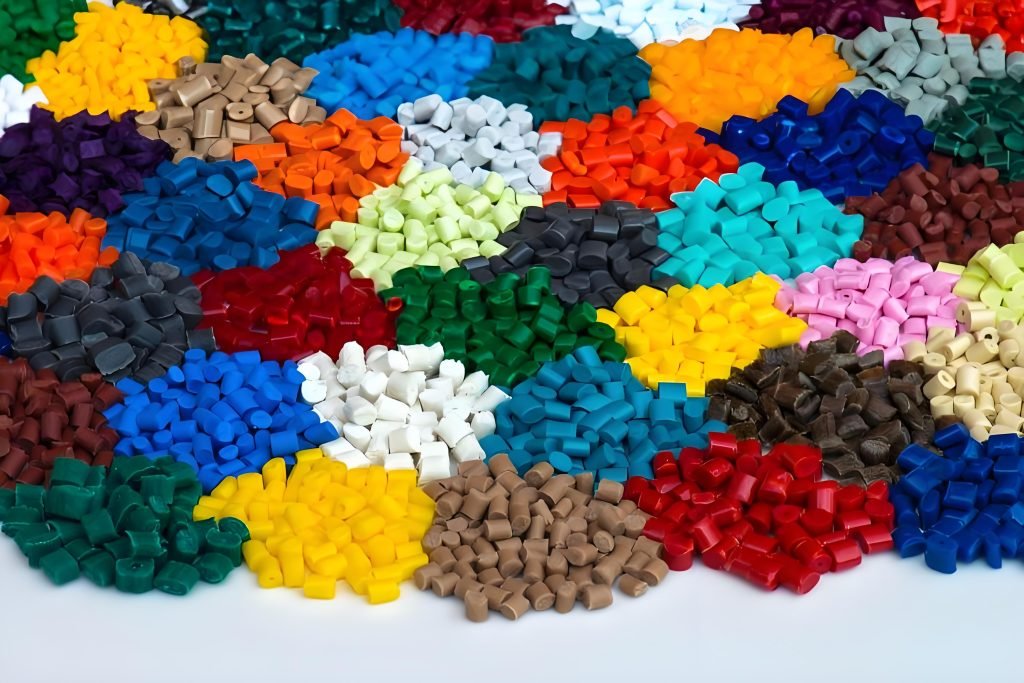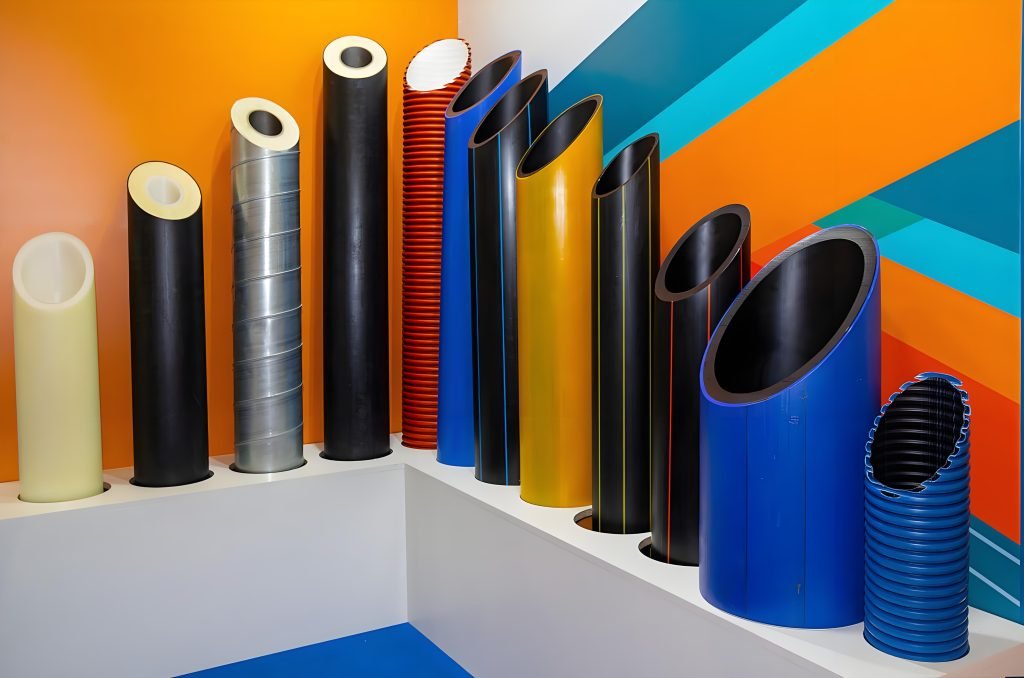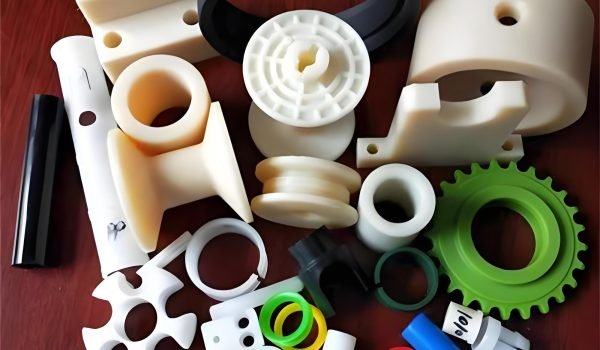Surprising fact: nearly half of service failures in fluid systems trace back to wrong material choice, not design. That single statistic shows how critical your selection is when parts face aggressive media, heat, or long exposure.
You need a fast, confident way to pick the right polymer for precision machining. This guide gives you a practical roadmap from fundamentals to specific material picks and real-world applications.
You’ll learn what chemical resistance really means in service and why it depends on temperature, concentration, exposure time, and surface area. We compare PTFE, PEEK, PVC, HDPE, PP, and PVDF with service-temperature ranges and machining notes so you can avoid surprises during cutting and finishing.
By the end, you’ll have a clear reference for choosing materials, when to test under your environment, and how to connect material properties to manufacturing realities. That helps you specify components that meet tolerance, safety, and timeline goals.
Is Plastic Chemical Resistant?

Choosing the right polymer for a given reagent often decides whether a part lasts weeks or years. You need a practical way to read compatibility data and predict field performance before you order stock or start machining.
Understanding chemical compatibility and resistance in plastics
Standard tests expose a coupon to a reagent for 30 days at a set temperature, then rate the effect. Test reports list swelling, embrittlement, weight change, or visual damage so you can compare materials.
Higher temperature speeds reaction rates and diffusion, so modest changes in those days can reveal delayed damage. Concentration and surface area also matter: larger wet areas increase the chance of failure.
Remember that acids, bases, organics, and water interact with polymer backbones and fillers differently. Compatibility is conditional, not absolute — a material may be chemically resistant to one reagent and vulnerable to another.
Reduce risk by lowering operating temperature, trimming exposure windows, or diluting the reagent. Still, validate at worst-case settings and work with Fecision to translate lab data into machining and assembly choices that limit stress, crevice effects, and long-term damage.
Chemically Resistant Plastic Material Considerations
Before machining, you must quantify the worst-case thermal and chemical loads the part will face. Define allowable temperature limits for continuous use and note peak temperatures that can speed attack and absorption.
Temperature and continuous use
Higher temperatures raise reaction rates and can reveal delayed damage. Set both normal and high-temperature limits and plan validation at those settings.
Exposure time and concentration
Model exposure at peak conditions. A sample with little effect after 30 days may still crack later if stresses or microdefects exist.
Matching media and additives
Match acids, bases, and solvents to polymer families using charts as a reference. Account for fillers and additives that alter swelling and tool behavior during machining.
Surface area and stress cracking
Reduce exposed surface area. Polish flow paths, remove sharp corners, and minimize stress risers to lower cracking risk.
Plan days-based testing: a quick 7-day screen followed by a 30-day hold gives a practical picture of long-term service and helps confirm material compatibility for your parts.
Top 5 Chemical Resistant Plastics

A quick run-through of the most used engineering polymers helps you match material to application fast.
PTFE (Teflon)
PTFE gives exceptional resistance across most chemicals and holds stability at very high temperatures up to 260°C (500°F).
It is soft, low-friction, and ideal for seals, valves, and semiconductor fixtures where minimal wear over many days matters.
PEEK
PEEK delivers high strength and dimensional stability for precision parts in continuous use to 170°C (338°F).
Use it when tight tolerances and resistance to harsh media are required; it machines well for complex features.
PVC
PVC is a cost-effective, stiff choice for tanks, manifolds, and fittings that you can bond and fabricate easily.
Note its molding window is limited and some injection routes can cause off-gassing damage during melting.
HDPE and Polypropylene
HDPE provides broad compatibility, low moisture uptake, and clean machining for light-duty tanks and covers.
Polypropylene is low-cost, stress-crack resistant, and suited for parts exposed to diluted acids and bases at moderate temperatures.
PVDF
PVDF is UV-stable and non-flammable, resisting many organics, aromatics, alcohols, and halogenated solvents.
It works well for outdoor equipment and battery-adjacent piping but shows weaker resistance to strong bases and some ketones.
Use days-based test data to compare how each material shows damage or effect under your real media, and align machining methods to material behavior for reliable parts.
Applications of Chemical Resistant Plastics
Your equipment life and maintenance schedule change dramatically when materials match their service environment. Use practical pairings to keep uptime high and to cut repair cycles.

Fluid handling components
For manifolds, valves, pumps, piping, and light-duty tanks you can specify hdpe or polypropylene when diluted acids, bases, and water are present. These materials show low moisture uptake and typically show little damage after 30 days at moderate temperatures.
PTFE is ideal for seats, bushings, and seals in pumps and valves where low friction and stable sealing force matter despite temperature swings.
Electronics and semiconductor equipment
Choose PEEK and PVDF for insulating fixtures, connectors, and high-performance housings. They stand up to cleaning agents and offer dimensional stability so your equipment keeps alignment during long cycles.
Medical, food, and outdoor infrastructure
PVC works well for cost-sensitive tanks, ducting, and wash stations where bondability speeds assembly. Use PVDF for outdoor piping and battery-adjacent parts thanks to UV durability and non-flammable behavior.
Validate selections with compatibility data to distinguish little or no effect after 7 or 30 days from immediate-failure media. Work with Fecision to machine parts that preserve smooth flow paths and reduce localized attack in your operating environment.
Choose the Right Chemical-Resistant Plastic
Start your material choice with a clear checklist that ties media, temperature, and production method to expected in-service life. Use charts and reference data to eliminate incompatible options quickly.
Start with charts and reference data
Screen candidate materials against your media list using chemical compatibility charts. Pull original reference notes to see whether test results show little or no damage after 30 days or early failure at elevated temperatures and concentrations.
Account for temps, concentration, and time
Define operating temperature, spikes, chemical concentration, and time-to-first effect. Estimate safe continuous use windows from those inputs and the charted outcomes.
Weigh processing and machining constraints
Shortlist two to three materials based on resistance to your solvents and required strength. Check machinability, chip behavior, surface finish, and whether injection molding or forming suits your design.
Validate with prototypes and testing
Prototype critical parts and run bench tests at your temperatures and chemical concentration. Log dimensional change and visible damage over days and set acceptance criteria for continuous use.
Chemical Resistant Plastics: Contact Fecision for Chemical Resistant Plastics Machining
Get expert machining and material guidance to stop field failures before they start. Send your media list, operating temps, and lifecycle goals so we can propose the right options for your applications.
We recommend machined hdpe for low-moisture parts and tanks where broad compatibility and easy machining matter. Use peek when you need high strength and continuous use to 170°C (338°F).
Polypropylene gives stress-crack resistance for lighter-duty assemblies, while PVC suits many fabricated manifolds if molding limits are acceptable. We check compatibility and likely effect so you avoid unexpected damage or cracking in service.
Work with us and you’ll get manufacturability feedback, guidance on molding versus precision machining, and test coupons or prototypes run over days at your peak environment. We also provide tight-tolerance finishing and inspection for components that must seal and align reliably.
Contact Fecision for quotes, validation plans, and quick technical support to protect parts and keep your applications running on schedule.
Conclusion
Apply these simple checks to turn lab charts and tests into reliable field performance.
You’ve learned to read chemical compatibility and judge chemical resistance by time, temperature, and concentration. Use charts to narrow candidates, then run short and 30‑day trials to see the real effect of your solvents and chemicals on parts.
Select PTFE, PEEK, PVC, HDPE, PP, or PVDF based on media, strength needs, and service temperature. Note that hdpe often fares well in acids and aqueous mixes over days, but some organics can cause rapid damage and cracking.
Specify acceptance limits tied to time and temperature, check containers and wetted geometry, and validate before full production. Work with Fecision to translate compatibility data into machined parts that meet tolerance and last in use.




